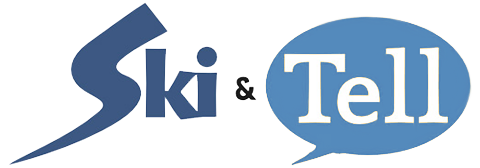Timberline / Canaan race coach Mark Fiorini recently returned from the prestigious National Alpine Coaches Academy at Mount Bachelor, Oregon. In an interview with DCSki columnist John Sherwood, Fiorini shares some of the new skiing techniques he learned from the U.S., Austrian, and Slovenian national coaches who taught at the academy in May 2002. Fiorini also discusses the late season skiing at Mount Bachelor - one of America’s most legendary ski venues.
DCSki: Can you give us an overview of National Alpine Coaches Academy and its role in training coaches across the country?
Fiorini: The National Alpine Coaches Academy was established in 1997 to advance the level of Coaches education in the US. Since then, 500 Coaches nationally have graduated and received certificates from the school. It lasts 11 days. They make no promises about anything except you are going to work. It was very intense, with most days spanning 12 hours from beginning to end.
DCSki: Tell us a little about Mount Bachelor?
Fiorini: Bachelor is large, mostly above the tree line. It offers skiers and snowboarders 3,700 acres, 71 trails, a 3,365 vertical, and 11 lifts. The 9,065 foot extinct volcano has slopes on every side of the mountain, and is legendary for its high-desert like powder - something no other mountain in the Pacific Northwest offers. The cornice at the top is extremely steep and you have to drop off it to access the bowl skiing. Skiing in spring opens at 7:30 a.m. and closes at 1:00 p.m.
DCSki: What was the snow like in May?
Fiorini: The snow was excellent. It held until about noon everyday, and we did not use calcium chloride (salt) or any other chemicals to preserve the course.
DCSki: Where did you stay?
Fiorini: The Mount Bachelor Village. Mount Bachelor is in the heart of virgin wilderness with very little development around the mountain. This makes the area a gem not only for alpine skiing but Nordic as well. Mount Bachelor boasts 56 miles of cross country tracks through some of the most beautiful landscape in the Northwest. It’s the antithesis of many overgrown resorts in the West. That being said, there are plenty of restaurants, shops, and accommodations in Bend, about 20 miles from the mountain.
DCSki: Who taught at the Academy?
Fiorini: Phil Mahre was coaching as were 40 other US Ski Team Coaches, and 15 guest coaches from Austria and Slovenia, plus the entire US Development Team, and the PSIA Demonstration Team.
DCSki: Impressive! What did these gurus stress?
Fiorini: Much of the program focused on the tremendous changes in technique brought about by shorter skis. There have also been major changes in course setting. My major goal for next season is to convey the lessons I learned there with my athletes, although I should stress that our program is generally on target with respect to technique and course settings.
DCSki: Do you have any slots on the team next year for a 36 year old wannabe? Just kidding. Tell me more about short ski methodology? I tested the 2002-2003 Atomic GS-II’s at Timberline late last year and was amazed at how well they held an edge - especially in frozen granular conditions. I’m almost tempted to buy a pair for recreational skiing. They really gave me confidence at speeds on the ice - my Volkl G-31s felt like an old car by comparison.
Fiorini: The new skis require a wider stance. Also, the weight distribution is more even between both feet. There is less vertical movement in the “un-weighting Phase” (today called the preparation/completion phase), and less countering or counter-rotation at the “cross-under.” My children will be racing in Atomic boots, bindings, and skis this year.
DCSki: Were Austrian coaches as good as their skis? How did their techniques contrast with those of the American coaches? I know you spent a year training at St. Anton as a younger racer so you are in a good position to comment on the differences between European and American coaching.
Fiorini: The contrasts are significant - especially their training methods and drills. Our methods do not demand the same level of perfection in movement patterns and efficiency. The Euros are sticklers for perfection. But both the US Ski Team Coaches and the PSIA guys were more fun to work with. Both programs are doing more and more free skiing. As for the Austrians, they probably still have the most depth, but the Norwegians and Slovenians earned a lot of Olympic hardware with fewer skiers.
DCSki: How did the program employ computer technology to improve coaching?
Fiorini: The Dartfish people, the ones that do the “overlay” video of two skiers on the course at once, were there. Also, the Slovenian team had similar software that measured joint angles and ski pressure that was really amazing.
DCSki: Do you feel that you are now a better coach because of the experience?
Fiorini: Absolutely!
DCSki: Thank you for your time and good luck next season!
John Sherwood is a columnist for DCSki. When he's not hiking, biking, or skiing, he works as an author of books on military history.

Join the conversation by logging in.
Don't have an account? Create one here.